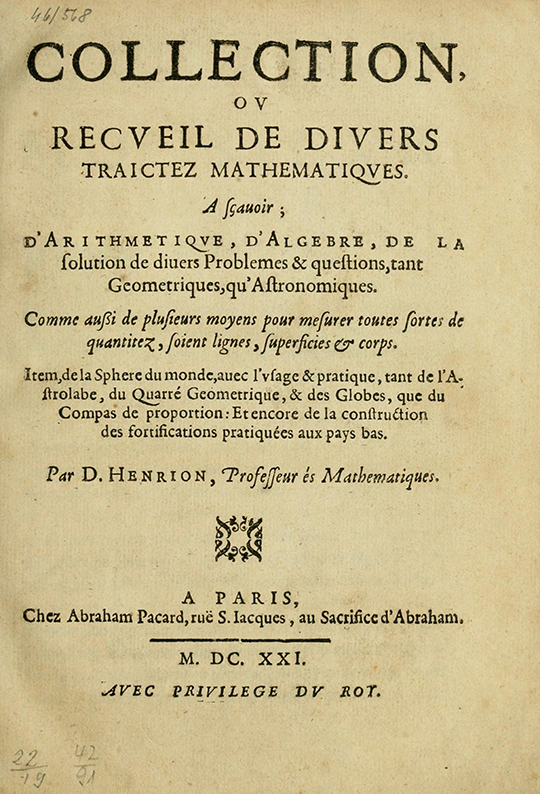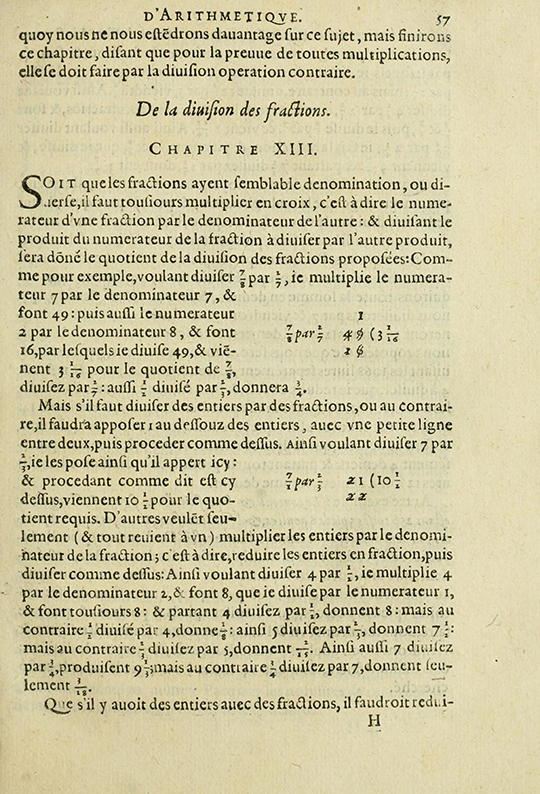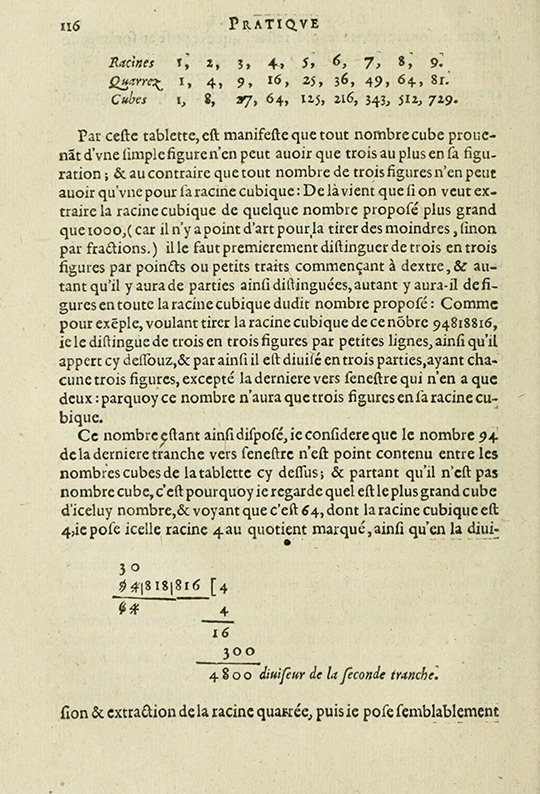- About MAA
- Membership
- MAA Publications
- Periodicals
- Blogs
- MAA Book Series
- MAA Press (an imprint of the AMS)
- MAA Notes
- MAA Reviews
- Mathematical Communication
- Information for Libraries
- Author Resources
- Advertise with MAA
- Meetings
- Competitions
- Programs
- Communities
- MAA Sections
- SIGMAA
- MAA Connect
- Students
- MAA Awards
- Awards Booklets
- Writing Awards
- Teaching Awards
- Service Awards
- Research Awards
- Lecture Awards
- Putnam Competition Individual and Team Winners
- D. E. Shaw Group AMC 8 Awards & Certificates
- Maryam Mirzakhani AMC 10 A Awards & Certificates
- Two Sigma AMC 10 B Awards & Certificates
- Jane Street AMC 12 A Awards & Certificates
- Akamai AMC 12 B Awards & Certificates
- High School Teachers
- News
You are here
Mathematical Treasure: Henrion's Arithmetic and Algebra
Denis Henrion (also known as Pierre Hérigone, d. 1632) was a French mathematician and military engineer who is remembered for his work in clarifying and defending the theories of François Viète. His Collection, ou recueil de divers traictez mathematiques … d'arithmetique, d'algebre, … (1621), presented a solid course in basic mathematics.

Numeration and the naming and use of numbers was always the first topic or “operation” to be discussed in arithmetic books of the time.


In the discussion of division on page 27, the example of 16450237 ÷ 579 is posed and solved, using the “downward” algorithm. Note the listing of the possible divisors, i.e. multiples of 579, in the lefthand column of the example.

The division of fractions is considered. Try to follow the computation. How does it compare to the technique generally used today?

On the top of page 76 is an example of the “Chain Rule” for the exchange of monies and commodities between different locations with different systems of values. Here 365 lbs in Paris is to be transported to Flanders. It is known that 100 lbs Paris equals 116 lbs in Lyon and that 110 lbs Lyon becomes 100 lbs in Flanders. Using these conversions, it is found that 365 lbs Paris becomes 375 23/55 lbs. in Flanders. The bottom of the page begins a discussion of the “Rule of Society or Company” which concerns the division of profits or debts among a partnership where the partners each have different investments in the company. The following page provides an example.


On page 116, the author discussed the concept of a number cubed and illustrated it by giving a list of cubes. He then undertook a discussion of extracting the cube root of a large number, 94818816. The method employed was a variation of division as demonstrated and explained here ("cube root" at National Institute of Standards and Technology website).


The section on algebra begins with a discussion of exponentiation and provides a listing of the symbols used to represent various powers.


The images above are presented courtesy of the Thomas Fisher Rare Book Library, University of Toronto, and are available via Internet Archive.
Frank J. Swetz (Pennsylvania State University), "Mathematical Treasure: Henrion's Arithmetic and Algebra," Convergence (July 2018)




